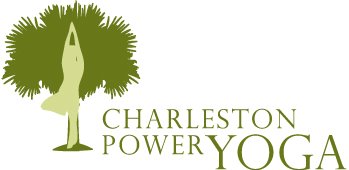 |
| Image via Liz on pinterest |
Kidding. The old me would say that I am the failure for not holding to my commitment. But, sometimes life happens and you have to be present and available to other things in the moment. Plus, I no longer believe in failure anyway -- thank God. I do believe, however, that you can only begin exactly where you are and today, my loyal followers (I had no idea you existed until last week!), I begin (again) with addressing the principles. Here goes #2:
Be in the Now and You'll Know How.
No, you are not experiencing déjà vu. Principle I, "You are either here now or nowhere," has a slightly different twist on the "now" thing. Yes, you are catching on that the concept of being present is pretty darn important in getting to that edge. Baron links this "now" principle very closely to the asana (physical) practice and the significance of tuning out distractions to be 100% in-tune with your body's voice.
How can you apply this to your own practice? Think about a pose that you can't quite get. Maybe you feel like you are not flexible enough or strong enough or confident enough to fully execute the position. This leads to frustration. Which leads to loss of focus. Which leads to going nowhere. Better get back here. Now.
For the longest time the transition from prasarita padottanasana (wide leg forward bend) into sirsasana II (tripod headstand) was a foreign movement to me. Being blessed with freakishly open hamstrings, my head easily slammed into the ground in the forward fold, setting me up with a solid base upon which to make the transition. But I would get stuck there with my feet glued to the ground.
About a year ago, I was in a class led by the fabulously funny jokester and CPY teacher Jessica Kenny. I decided it was sarcasm speaking when she instructed us into that forward fold and let us know that if our heads reached the mat, we had to take tripod headstand. Good one, Jess. I'll just effortlessly find the necessary balance and weight distribution upon on my head and two hands then use my core to magically lift my feet from the earth and over my head. Oh, and I definitely won't fall and hit the person who is six inches away from me or anything. Then I'll levitate. No big deal. The thing is, the transition really was no big deal for me at that point in my practice. I had the flexibility. I had the strength. I had the balance. What I did not have was the body awareness. In order to hear my body, I needed my mind to shut up.
I decided that day that I would practice this transition at home after every yoga class. I highly recommend practicing postures you are determined to master at home! A few minutes in a class gives you a limited chance to work on the pose. Especially if you find yourself distracted by defeat, fear, or over-interpretation of instruction. You have to feel postures in your own body. In my case, I was also keeping the safety of fellow yogis in mind.
The day that I finally found lift off was the day that I stopped using my brain. My body was trusting my brain's suggestion that this was impossible. Already beat after a powerful practice, I re-rolled out my mat in my bedroom, not really feeling like working on anything else at that point, took the forward fold without much thought, set up strong, and felt my feet come off the mat and into a headstand position. I left it up to my body and my body totally got it -- and it suddenly became effortless and natural. Now I eagerly await the opportunity in class to go upside down. Even in the mat-to-mat 5:45pm classes!
In your practice, look at where you need to give your mind a break and let your body do the work. Don't over-think alignment. Trust your body on your mat. Base the growth of your practice on intuition -- you will go where you need to when you are ready.
See you on the mat,
Liz (lizabramsyoga.com)



No comments:
Post a Comment